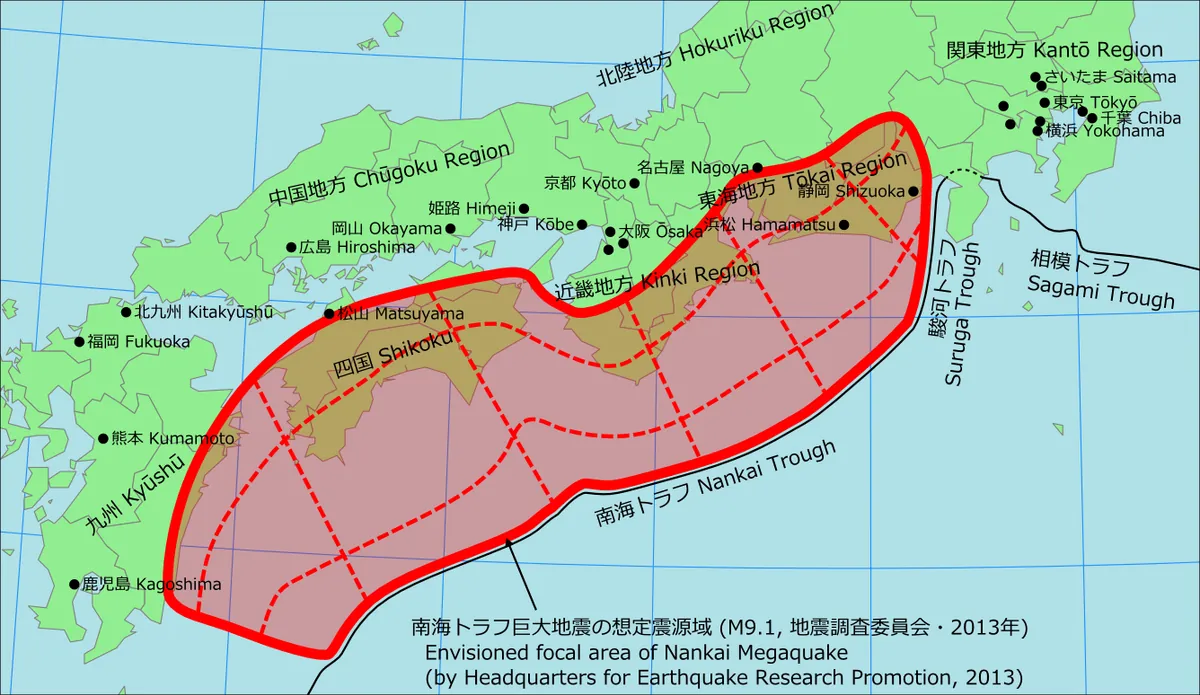Japan Issues Unprecedented Megaquake Alert for Nankai Trough
Japan warns of heightened megaquake risk following a 7.1 magnitude tremor near the Nankai Trough. Experts advise vigilance as the potential disaster could cause widespread devastation and significant economic impact.

On August 8, 2024, Japan took an unprecedented step by issuing its first-ever advisory on elevated risks of a megaquake following a strong magnitude 7.1 tremor near the Nankai Trough. This seismically active zone, stretching approximately 900 km along Japan's southwest Pacific coast, has been a source of concern for seismologists and government officials alike.
Naoshi Hirata, chair of Japan's Nankai Trough quake advisory panel, stated that the probability of a larger earthquake occurring after a magnitude 7 event is approximately one in a few hundred cases. This risk is notably higher than during normal periods. Hirata urged residents in potentially affected areas to review evacuation procedures and remain vigilant for at least a week.
The Nankai Trough is a subduction zone where the Philippine Sea Plate slides beneath the Eurasian Plate, accumulating tectonic strain that could result in a catastrophic megaquake. Japanese authorities have previously estimated a 70-80% chance of a magnitude 8 to 9 earthquake occurring along the Trough within the next 30 years.

Japan's vulnerability to seismic events is well-documented, with the country experiencing about 1,500 earthquakes annually. The nation sits on the Pacific "Ring of Fire," a region responsible for 75% of the world's active volcanoes and 90% of its earthquakes. This geological setting has prompted Japan to develop one of the world's most advanced earthquake monitoring and warning systems, including a network of over 1,000 seismometers nationwide.
The potential impact of a Nankai Trough megaquake is staggering. Estimates suggest that such an event could result in up to 323,000 fatalities, destroy 2.38 million buildings, and force nearly 10 million people to evacuate. Tsunamis up to 30 meters high could reach Japan's Pacific coasts within minutes, depending on the epicenter and tidal conditions.
The economic consequences of such a disaster are equally daunting. Projections indicate potential damages of up to 220 trillion yen (approximately $1.50 trillion), equivalent to more than a third of Japan's annual gross domestic product. This impact would likely have long-lasting effects on infrastructure and supply chains, particularly affecting coastal industrial centers crucial to Japan's automotive and manufacturing sectors.
"Residents in areas that would be hit by such a disaster should review evacuation procedures and stay vigilant for a week."
Historical records show that Nankai Trough earthquakes have occurred multiple times since 684 CE, often accompanied by devastating tsunamis. The most recent significant event in this region was a magnitude 8.0 earthquake in 1946, which generated a 6.9-meter tsunami and claimed 1,330 lives.
Japan's experience with major earthquakes, including the 2011 Tohoku disaster that resulted in over 15,000 deaths and triggered the Fukushima nuclear crisis, has led to continuous improvements in preparedness and response strategies. The country has conducted nationwide earthquake drills since 1960 and has implemented some of the world's strictest building codes to enhance structural resilience.
As Japan faces this heightened risk period, the nation's advanced early warning systems, including the Earthquake Early Warning system capable of providing alerts seconds before shaking begins, will play a crucial role in minimizing potential casualties. The Japan Meteorological Agency's unique intensity scale for earthquakes, different from the Richter scale, helps communicate risk levels more effectively to the public.
While the threat of a Nankai Trough megaquake looms large, Japan's ongoing efforts in disaster preparedness, public education, and technological innovation in seismic monitoring continue to evolve, aiming to mitigate the impact of what could be the most significant natural disaster in the country's modern history.


































